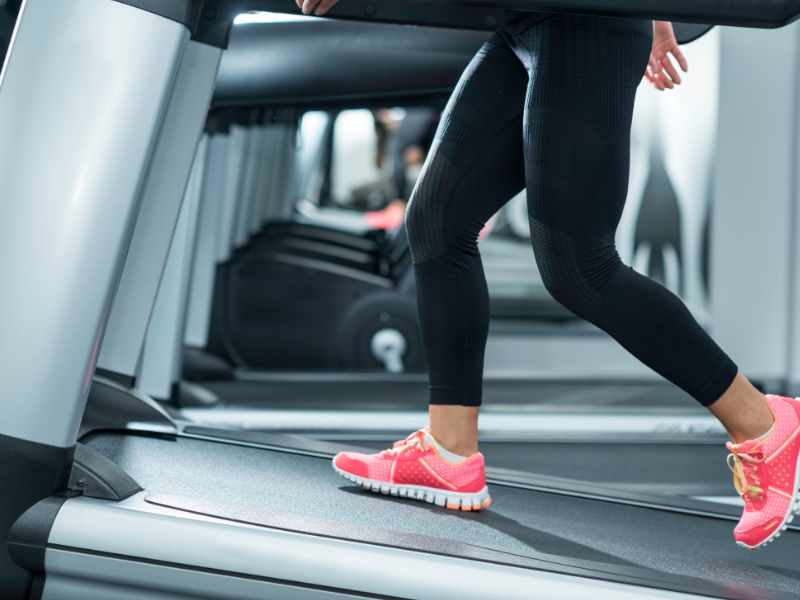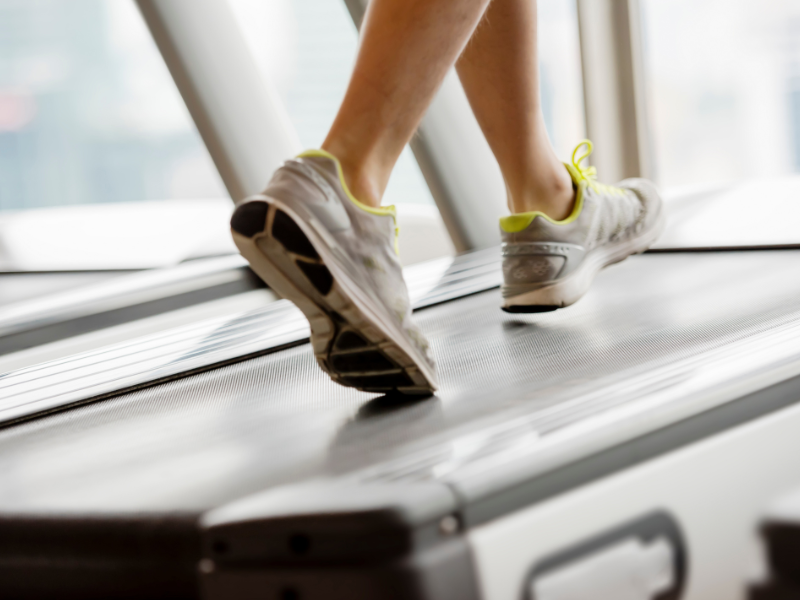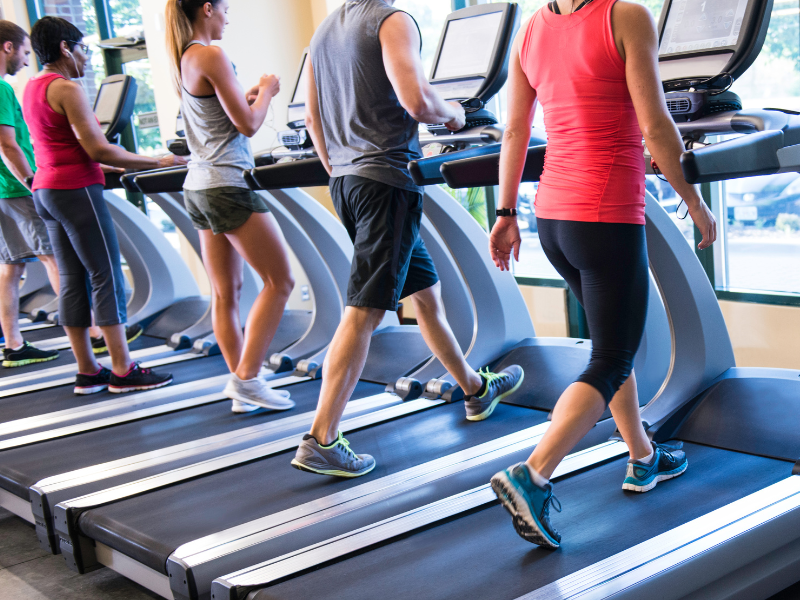




Fitness trends seem to pop up left and right, but one that’s recently caught the attention of many is the 12-3-30 workout. Simple yet effective, this low-impact treadmill routine has been making waves for its promise of benefits like weight loss, better heart health, and stronger legs. The best part? You don’t need a lot of equipment—just a treadmill and 30 minutes to spare. If you’re curious about how this cardio workout works, what it can do for you, and who it’s best suited for, we’ve got all the details right here.
What is the 12-3-30 Treadmill Workout?

A simple yet effective treadmill routine that has taken the fitness world by storm. The idea is to walk at a 12% incline, set your treadmill to a pace of 3 miles per hour (roughly 4.8 km/h), and keep moving for 30 minutes. It sounds easy enough, but trust us—it’s a solid workout! This routine gained popularity thanks to Lauren Giraldo, a social media influencer, who shared how it helped her overcome gym anxiety and conquer her fitness goals [1].
Here’s a step-by-step guide on how to do the 12-3-30 workout:
- Warm-up: Start with a 5-minute walk at a flat or slightly inclined treadmill setting to get your body moving.
- Set the Incline: Adjust the treadmill to a 12% incline.
- Set the Speed: Set the treadmill to 3 mph (4.8 kph).
- Walk: Maintain the 12% incline and 3 mph speed for 30 minutes.
- Cool-Down: Finish with another 5-minute walk at a flat or slightly inclined pace.
You may also like:
28-Day Indoor Walking Challenge for Weight Loss [Free PDF]
Is It Better to Do Cardio Before or After Weights? Learn About Expert Opinions
Benefits of the 12-3-30 Workout

The 12-3-30 workout has quickly become a favourite for a good reason – it offers several compelling benefits:
- Weight Loss: The elevated incline boosts your heart rate and increases calorie burn – walking on an incline burns more calories than walking on a flat surface due to the higher energy expenditure required [2]. Many people, including Giraldo, have credited the workout with helping them shed unwanted pounds. Of course, long-term weight loss is most effective when combined with a healthy diet and consistent exercise, but this workout definitely gives you a solid head start!
- Lower Body Strength: The 12% incline in the 12-3-30 workout really targets your lower body muscles, especially the glutes, hamstrings, calves, and quads. Compared to regular outdoor walking, this incline gives you a more intense workout for these areas, helping to tone and strengthen your legs over time [3].
- Improved Cardiovascular Health: The elevated heart rate from walking uphill improves cardiovascular endurance. Research has shown that incline walking can elevate your heart rate more than walking on flat terrain, contributing to better heart health over time. [4].
- Convenience and Accessibility: You don’t need much—just a treadmill and 30 minutes. Whether you’re at the gym or walking in the comfort of your own home, it’s easy to fit into your routine. Plus, since it’s a low-impact exercise, it’s gentle on the joints, making it perfect for people at all fitness levels.
That said, the 12-3-30 workout might provide a bit more intensity in a shorter amount of time. The steady incline on the treadmill forces you to work harder, boosting calorie burn and engaging your muscles more effectively. Furthermore, our pace when walking outdoors is prone to dip when we are tired, which lowers the intensity and effectiveness of the workout. But in the end, it all comes down to what fits your personal goals and lifestyle!

Potential Drawbacks of the 12-3-30 Workout Routine

While the 12-3-30 workout offers plenty of benefits, it’s worth considering a few potential drawbacks:
- Monotony: If you love the fresh air and ever-changing scenery of outdoor workouts, walking indoors on a treadmill might not keep your interest for long. The repetitive motion of staring at a wall for 30 minutes might get old quickly for some people.
- Limited Muscle Engagement: The 12-3-30 workout primarily targets the lower body, focusing on muscles like the glutes, quads, calves, and hamstrings. While it’s great for toning your legs, it doesn’t provide a full-body workout. If you’re looking for total body strength, you’ll want to complement this routine with upper body and core strength training exercises.
- Strain on the Lower Back: The steep incline may cause strain on the lower back, especially for those with weak core muscles or existing back issues. Proper posture and core strength are key to minimizing this risk.
Is It Safe to Do the 12-3-30 Workout?

For most people, the 12-3-30 workout is a safe and low-impact exercise [5]. It’s gentle on the joints compared to higher-impact activities like running, making it a great option for many fitness levels. However, as with any workout, it’s important to take your personal health into account. If you have any pre-existing conditions, especially related to your back, knees, or ankles, it’s always a good idea to check in with a healthcare professional before starting.
Above all, it’s crucial to listen to your body. Feel free to modify the incline, speed, or duration to match your fitness level and avoid discomfort or injury. And if you need extra support, don’t hesitate to use the handles on your treadmill to help with stability, especially if you feel any strain in your legs. It’s all about making the workout work for you!
This workout might be well-suited for:
Beginners: Its simplicity and low-impact nature make it a perfect choice for those just starting their fitness journey. You can even start with a lower incline and gradually increase it as you get stronger.
People with Joint Pain: Because it’s low-impact, it’s easier on the joints compared to high-intensity exercises like running. It’s a good option for those with mild joint pain, but if you have severe knee or ankle issues, you may want to take it slow.
Those Seeking Weight Loss: The combination of incline walking and calorie burn can help with weight loss, especially when paired with a healthy diet.
People Who Prefer Indoor Workouts: Those who prefer the stability and control of indoor workouts will find this routine a great fit.

Adapting the Workout: Tips for Beginners and Those with Concerns

If you’re new to the 12-3-30 workout, it’s a good idea to ease into it. Start with a lower incline—around 6%—and gradually work your way up to a treadmill incline of 12% over a few weeks. You can also reduce the workout time to 15-20 minutes in the beginning, giving your body time to adjust.
For those with back concerns, strengthening your core can provide more stability and support during the workout. Exercises like planks, side planks, and bird dogs are great for building a strong core and helping stabilize your spine. If back pain continues, consider lowering the incline or exploring other exercises that target the same muscles but put less strain on your back.
Remember to give your body some rest days to recover, especially if you’re doing the 12-3-30 daily. Overdoing it can lead to fatigue or injury, so alternating with other exercises can help keep your routine balanced and your body feeling its best.
For more cardio workouts:
Conclusion
The 12-3-30 workout is a simple, effective, and time-friendly way to reach your cardiovascular fitness goals. Whether you’re aiming to lose weight, boost your heart health, or strengthen your legs, this routine is a great option. While it’s generally safe, it’s important to be aware of some potential drawbacks, such as boredom, limited muscle engagement, strain on the lower back, and the risk of injury. But don’t worry—small adjustments and good form can help address these issues.
The key to a successful 12-3-30 experience is listening to your body, starting at a comfortable treadmill speed, and consulting with your doctor or certified personal trainer if you have any concerns. For more cardio workout routines that you can follow, check out the JustFit app!
How many calories does 12/3/30 burn?
How many times a week should I do 3/12/30?
How quickly do you see results from 12 3 30?
Biddulph, M. (2022, July 25). Incline walking vs running: Which is better for Fat Loss?. fitandwell.com. Available at: https://www.fitandwell.com/features/incline-walking-vs-running
Garaldo, L. (n.d.). MY TREADMILL ROUTINE + MEAL EXAMPLES. YouTube. Available at: https://www.youtube.com/watch?v=qs0hWytnZjQ
Haden, R. (2021, March 1). High-impact and low-impact exercise. Medical Associates of Northwest Arkansas. Available at: https://mana.md/high-impact-and-low-impact-exercise/
Ningthoujam, N. (2024, May 2). Walking on an incline for weight loss: Why and how to get started. Healthshots. Available at: https://www.healthshots.com/fitness/weight-loss/incline-walking/#:~:text=coach%20Rajat%20Goel.-,Incline%20walking%20for%20weight%20loss,potentially%20aiding%20weight%20loss%20efforts.
McLean, S. (2022, September 23). Uphill walking vs running: Which is better for you?. PCSI. Available at: https://pcsifl.com/uphill-walking-vs-running-which-is-better-for-you/#:~:text=Uphill%20Walking%20Vs%20Running:%20Burning,to%20walking%20on%20flat%20ground.
Padulo, J., Powell, D., Milia, R., & Ardigò, L. P. (2013). A paradigm of uphill running. PloS one, 8(7), e69006. Available at: https://doi.org/10.1371/journal.pone.0069006





